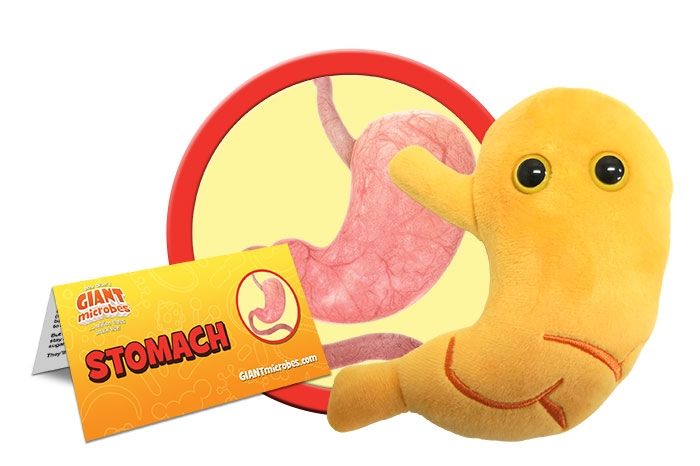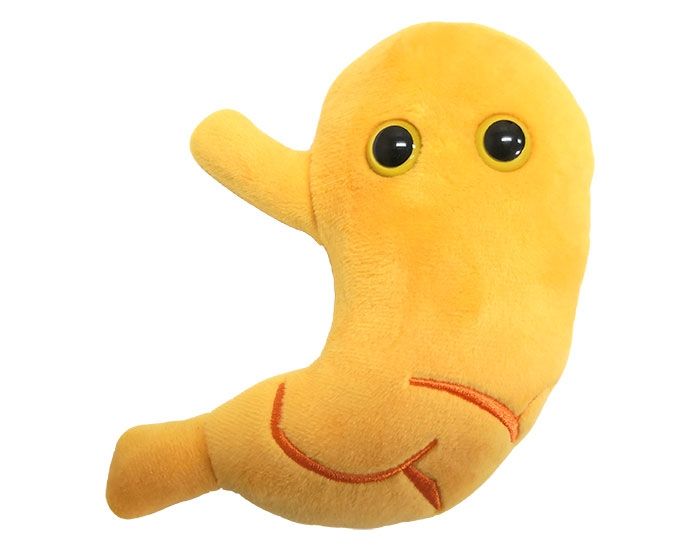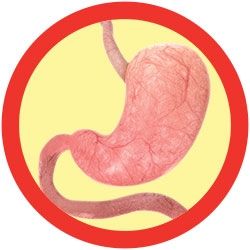Stomach
Colorful, fun and educational and medical get well soon gift. Perfect for post-surgery. Size is 5" x 3.5"
Product Details
Additional Information
| Sizes | Giantmicrobes are based on actual microbes, cells, organisms and other critters, only 1,000,000 times actual size! Gigantic (GG) 16-24" XL (XL) 10-15" Original (PD) 5-8" Keychain (KC) 2-4" with clip |
|---|---|
| Materials | Plush from all new materials. Stuffed with polyester fiber fill. Surface washable: sponge with water & soap, air dry. |
| Packaging | Each plush microbe includes a printed card with fun, educational and fascinating facts about the actual microbe or cell. |
| Safety | Every product meets or exceeds U.S. and European standards for safety. For ages 3 and up. |
All about Stomach
FACTS: The stomach is a small, hollow bag with muscular walls. It is both a food mixer and acid bath that receives, holds and digests food. This pouch-like organ is actually small, but as you eat the stomach wall quickly stretches to hold up to 3 liters. The powerful muscles lining the stomach churn and mash food, breaking up fats and proteins.
When you see or smell food, tiny stomach glands secrete gastric juice, mostly comprised of hydrochloric acid with a touch of the enzyme pepsin. The acid breaks down food and kills germs. Every day your stomach produces vast amounts of gastric acid, strong enough to digest the stomach itself. This is why protective mucous lines the stomach walls.
The stomach’s churning and mixing with gastric juice converts food into a thick liquid called chyme. After several hours, the chyme passes from the stomach into the small intestine. Compared to other creatures, the human stomach is not too exciting. The blue whale’s stomach can hold 2,000 pounds of food. The cow’s stomach is divided into four distinct sections that hold grass-chomping microbes. The jellyfish’s gastric cavity converts food into a soupy liquid that’s transferred directly into its circulatory system. Leftovers are expelled back out of the jellyfish’s stomach the same way it came in. Or how about the python’s stomach, which can stretch enormously and hold a fully intact deer!






